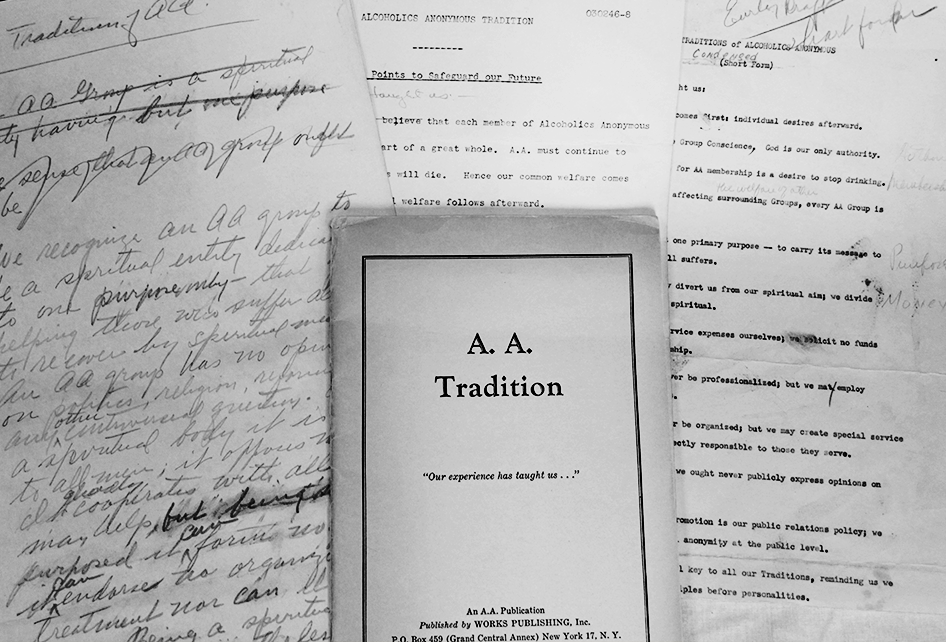The Twelve Traditions of A.A. resulted from a need for guidance in our growing organization. Co-founder Bill W. wrote them in the 1940s to address the various questions that arose among A.A. groups. These principles continue to provide A.A. groups with a framework for success.
Bill W. Shares His Ideas First Through The Grapevine
In April 1946, Bill W. wrote an article for the Grapevine entitled “Twelve Suggested Points for A.A. Tradition.” This was an early presentation of what would become known as The Twelve Traditions. With his usual foresight, Bill realized that the growing organization needed more guidance. It was important to preserve A.A.’s unity and singleness of purpose during this growth.
Bill described these letters as a "welter of exciting and fearsome experience." They played a key role in helping him develop the Twelve Traditions.
The Grapevine published the Traditions one by one from December 1947 to November 1948. In 1950, the First International Convention in Cleveland adopted the Twelve Traditions.
The Traditions provided guidelines (not rules) that would help A.A. groups then and in the future. They addressed relationships with the outside world and within Alcoholics Anonymous itself.
Today, A.A. groups continue to use The Twelve Traditions to strive toward that group ideal of unity. The groups continue to carry the hope to still-suffering alcoholics around the world.
